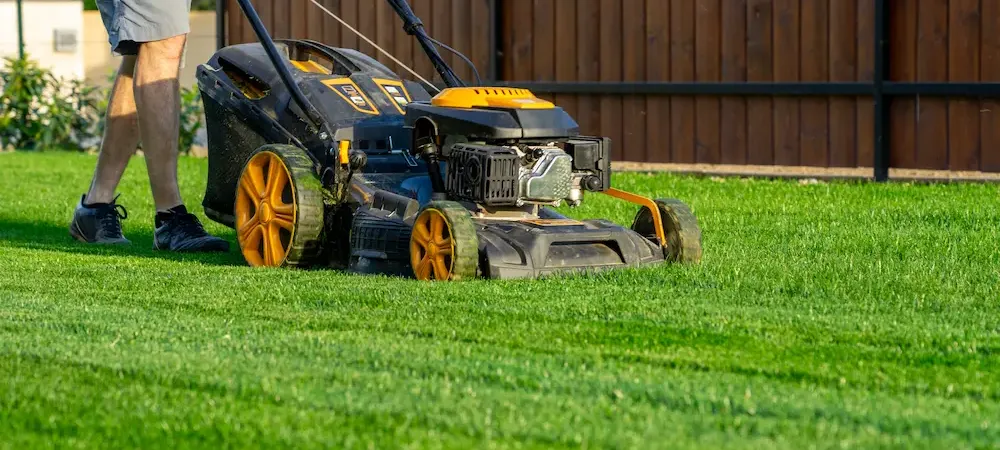How to Make the Most of Your Mowing: Lawn Cutting Tips and Tricks

Maintaining a healthy lawn starts with proper mowing. While it might seem like a simple task, how and when you mow can make a big difference in the overall look and health of your yard. Whether you’re focused on curb appeal or simply want a more efficient strategy, these tips and techniques will help you get the most out of your mowing routine.
Why Do We Cut Grass?
At this point, most of us mow our lawns without even thinking about why we do it—it’s just one of those things you’re expected to keep up with if you have a yard. Socially, a well-manicured lawn is often seen as a sign of care, pride, and even responsibility. Beyond looks, though, regular mowing actually plays a big role in the health of your grass.
Keeping your lawn trimmed helps promote thicker, healthier growth by preventing weeds from taking over and allowing sunlight and water to reach the base of the grass blades. But skip mowing for too long, and you might run into some bigger consequences.
Here’s why regular lawn mowing is important:
- Overgrown grass can smother itself, leading to patchy or weak growth
- Unkempt lawns attract pests like ticks and mosquitoes
- Weeds can take over more easily
- Can lead to fungal issues due to poor air circulation
- Makes your yard look neglected (and might irritate your neighbors!)
So while it might feel like a chore, mowing regularly really does keep your yard healthier and prevents further issues from arising.
Best Tips to Mow a Lawn
Let’s tackle some tips on how to mow a lawn the right way. The goal isn’t just to cut grass, but to cut it well so that it thrives over time. Below are some helpful tips to elevate your mowing game.
What is the best pattern to mow a lawn?
Switch up your mowing pattern every time you mow. That means if you mowed north-to-south last time, go east-to-west the next, and then go diagonally the next time. This prevents the grass from leaning in one direction and helps you get a cleaner, more even cut. Plus, it reduces the chance of creating ruts from repeated wheel paths.
Should you mow in circles or straight lines?
Straight lines tend to give you that classic, striped look people love—and they’re easier for most yards. Circles might be useful around obstacles or in irregularly shaped lawns, but they can make it easy to miss spots or over-cut certain areas. In general, straight lines are the go-to for consistency.
Should you mow fast or slow?
Go at a moderate, steady pace. Don’t rush it. Mowing too fast can tear grass instead of cutting it cleanly, especially if your mower blades are even slightly dull. You want to make sure every blade of grass gets an even cut—this reduces stress on the grass and leads to a better-looking lawn.
When and how often should you mow your lawn?
It’s best practice to mow in the evening. Early mornings are the worst time to mow your lawn. Morning dew or rain could damage your mower or cause your grass to tear. Mowing in the evening versus morning reduces the risk of disease and fungal infections that are more prone to occur throughout the daytime.
The sweet spot is usually once a week during peak growing seasons, but it can vary depending on your grass type and climate. A good rule of thumb: never cut more than one-third of the grass blade at a time. Sticking to a consistent schedule and mowing at the right time of day can help your lawn stay healthier and more resilient over time.
What to Do with Lawn Clippings
After mowing, you’ll likely have a pile of grass clippings—so what now? You’ve got two options: bag them up or leave them on the lawn.
Bagging is clean and tidy, and some people prefer it, especially if they’re dealing with weeds or want a manicured look. But there are actually benefits to leaving those clippings behind.
Leaving clippings helps return nutrients (especially nitrogen) back to the soil. It gives your lawn free fertilizer! It also helps reduce thatch buildup when done regularly.
Bonus tip: In summer, you should leave the lawn clippings on the lawn to help retain moisture. They act like a natural mulch, keeping your lawn cooler and more hydrated in the heat.
Common Lawn Mowing Mistakes to Avoid
It’s easy to overlook the small details when mowing, but those small missteps can add up over time. Here are some common lawn mowing mistakes to watch out for:
- Cutting the grass too short (“scalping”)
- Always mowing in the same direction
- Using dull mower blades
- Mowing with wet grass
- Not maintaining your lawnmower properly
- Ignoring edge trimming and cleanup
Steering clear of these mistakes not only improves the appearance of your lawn but also supports stronger, more consistent growth. With a bit of attention to technique and timing, your mowing routine can work with your lawn, not against it.
The Importance Of Mowing Correctly
Mowing your lawn isn’t just about appearances—it’s about the health of your grass. From using different mowing patterns to knowing when and how often to mow, there are lots of simple techniques that can make a big difference. Don’t forget that lawn clippings can actually be a good thing, and always avoid common mistakes like mowing too short or using dull blades.
If maintaining your lawn feels overwhelming and time-consuming, hiring a professional lawn mowing service can take the hassle off your plate. Whether you handle it yourself or bring in help, a well-maintained lawn not only looks great but can also prevent future problems and expenses.
